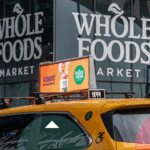When the brand promise and employee experience don’t align, you lose talent, creativity and growth. That’s why the CPO + CMO Power Partnership matters, says Carol-Ann White, Group Chief People Officer at Landor.
By Carol-Ann White, Group Chief People Officer at Landor
In our industry we obsess over our creative output, but creativity is only ever as strong as the culture that grows it. Add in the AI revolution, the increasing speed of delivery and tightening client budgets and the risk is not only burnout for our employees but also the widening gap between what a brand promises externally and what employees experience internally. Close that gap and you unlock a powerful shift that impacts culture, drives innovation, engagement and, ultimately, business growth.
This is where the CMO and CPO come together: a Power Partnership.
Marketing owns the promise, People teams own the experience. When those two are aligned, culture becomes the brand’s infrastructure: the ways of working, behaviours and everyday rituals that help teams deliver the brand promise consistently and meaningfully to both internal and external audiences.
Emotional Connection is central to this. It is not a soft skill but a strategic lever that predicts loyalty, pricing power and differentiation. Marketing and People teams share responsibility here. Marketing builds emotional pull externally; People leaders ensure the employee experience delivers the same feeling inside the business. When culture embodies the brand promise, performance and the numbers follow. At Landor, our BrandAsset® thinking tracks how differentiation, relevance, esteem, and knowledge build equity, giving both teams a shared set of KPIs. Inconsistency quickly shows when internal behaviours don’t match the feeling employees are meant to deliver for clients.
When your brand promise is clear, everyone, from creatives and strategists to finance teams, instinctively know what “good” looks and feels like. This clarity is hugely important – it reduces friction, boosts engagement and speeds up ways of working because the brand isn’t constantly being re-debated. A great example is Tesco, one of the UK’s strongest retail turnarounds – its recovery was not led by campaigns alone, but by coherent experiences that rebuilt trust through a clear internal culture focused on serving shoppers better, from Clubcard innovations to value-led communication. That’s brand and culture working as one, not just “HR stuff” on the side. It’s the ‘power partnership’ of the marketing and People teams in action.
LEGO offers another lesson. Its brand is rooted in wonder and curiosity, values that show up everywhere from product design to customer service and even its retail spaces. That coherence depends on employees feeling the same sense of creativity and pride that the brand projects to families worldwide. It is a reminder that when culture is tightly linked to brand promise, every touchpoint works harder.
Simple tools can make this link tangible. A concise one-page manifesto that brings the brand promise to life internally can have real impact. Use this manifesto at all touchpoints across the business, from onboarding and performance reviews to project briefs. When your people truly feel the brand at work, clients and customers are far more likely to experience it externally too.
To put this Power Partnership into practice:
- Pair customer satisfaction metrics with employee engagement surveys and review them together.
- Allocate budget and time to rituals, tools, and recognition that keep the brand promise alive in day-to-day work.
- Align employee and client retention goals on a shared dashboard so both teams are accountable for the same outcomes.
Employees and customers are more connected than ever before. That’s why forging a Power Partnership between the CPO and CMO is no longer optional – it’s essential for driving sustainable growth. By aligning around a shared brand infrastructure, businesses can activate the brand from the inside out, turning strategy into lived experience. When employees truly feel the brand, they deliver it authentically to customers and clients – and that resonance is what ultimately drives performance and shows up on the P&L.




